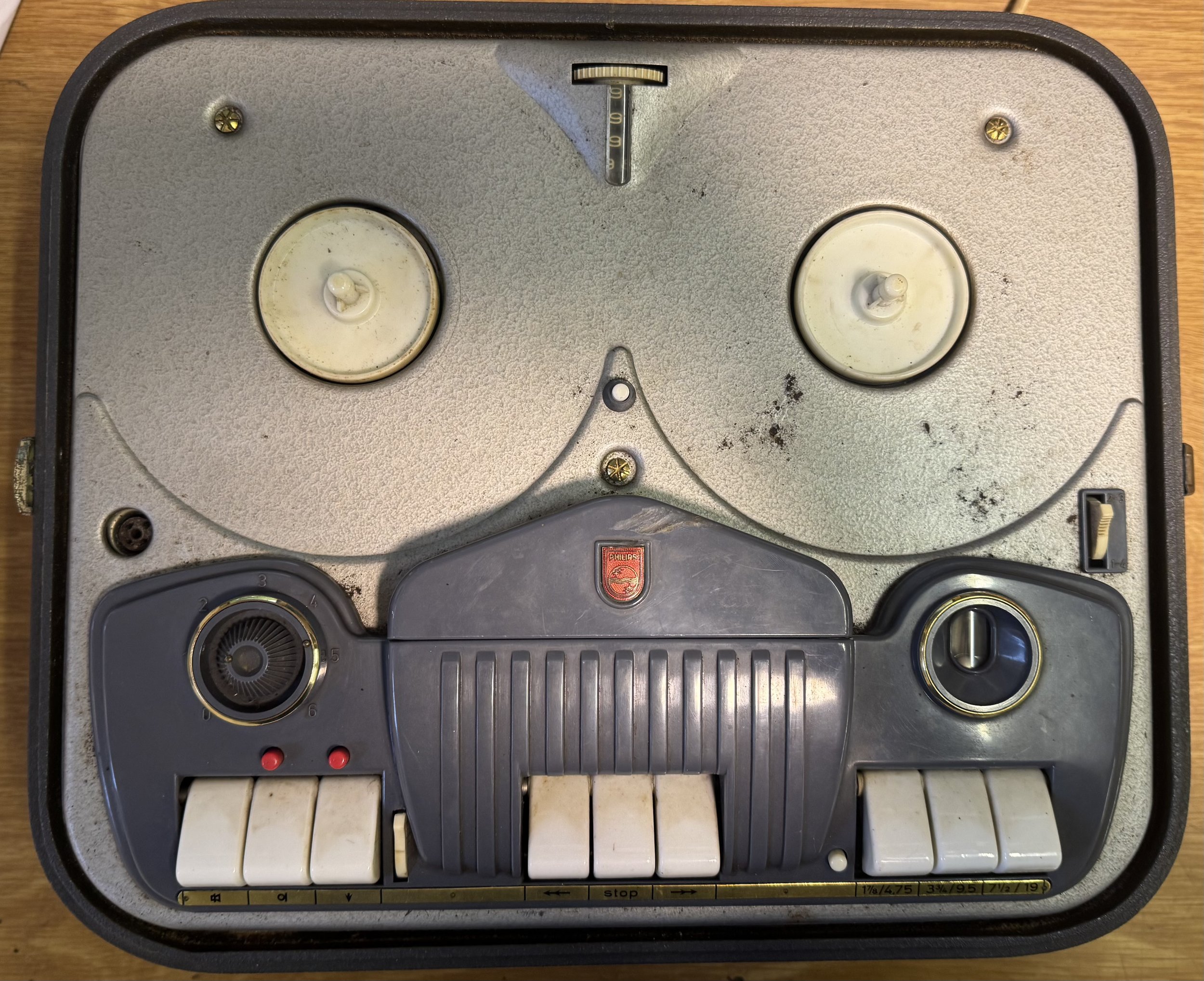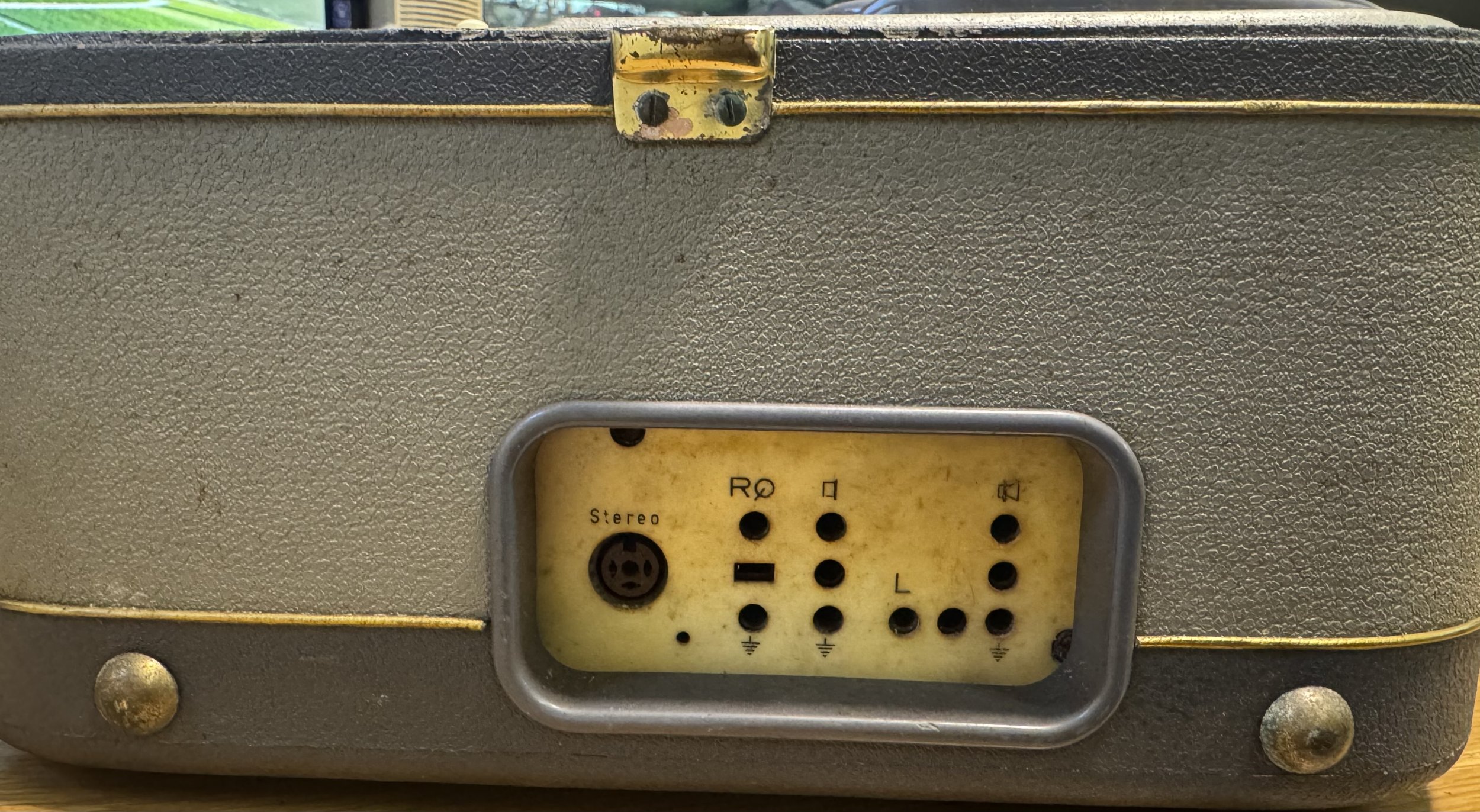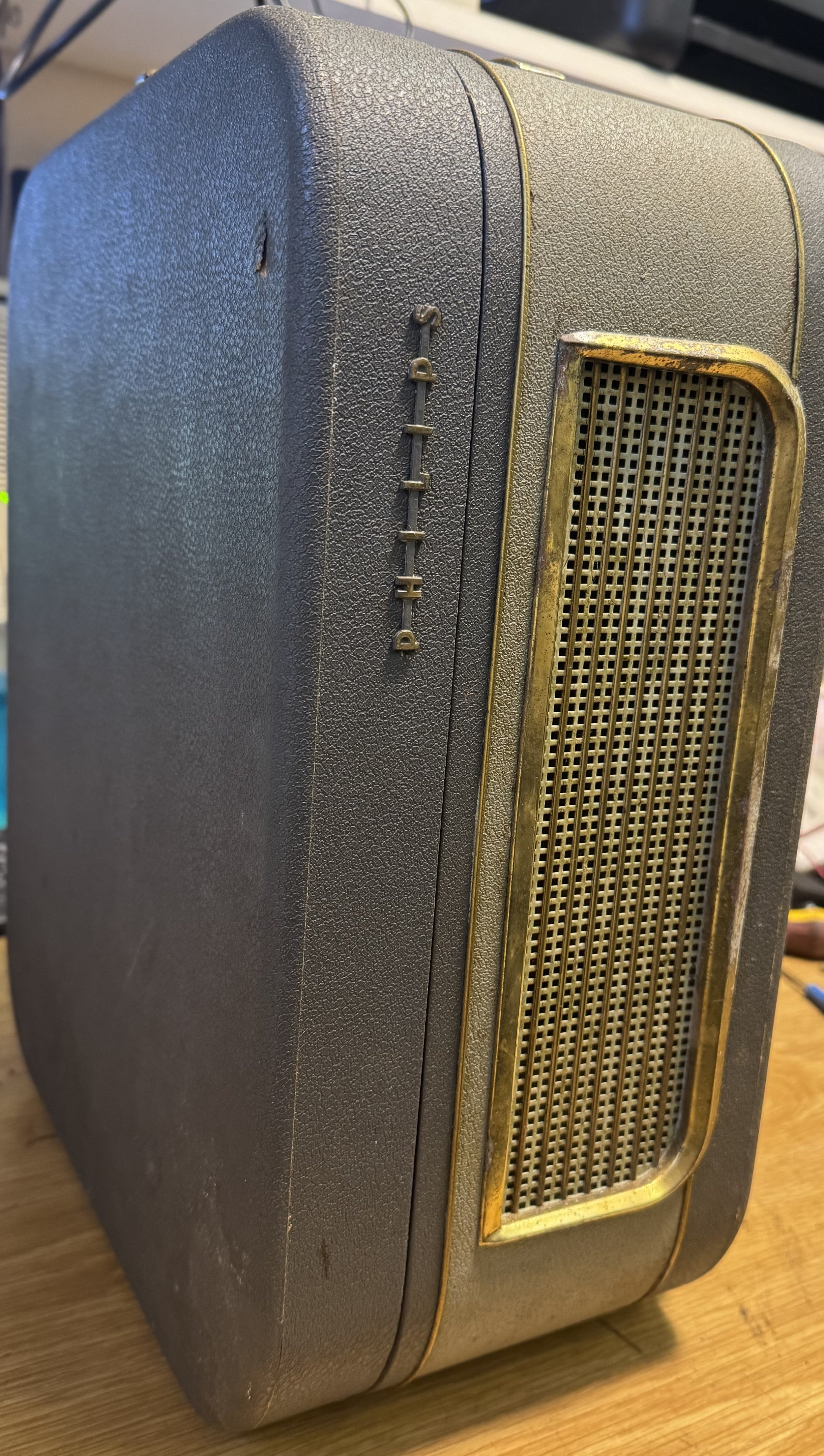Philips EL3542A - Reel To Reel Tape player (1960 - Valve technology)
With something of this age, you should never just “plug it in and see what happens”, as this is the easiest way to ensure your new piece of equipment blows up in your face. I opened the player up, and expected to change many capacitors and / or valves… However, the ESR readings of the capacitors in the unit were much better than most new ones are today.
My advice is never just to “replace all the capacitors” as soon as you get a piece of equipment, as it’s unnecessary if they’re tested properly. Just because they’re old, doesn’t mean they’re going to pack up at any time.
.
This classic Philips piece of equipment is mostly working. It plays at all three speeds, although wont rewind or fast forward without a little help as the belts are slack. The volume / tone control sort of works, but will need replacing as it crackles and hardly works. Tapping it makes the sound come and go, so a new pot will be required. This should be a simple and fun repair, and it’s virtually ready to go.
There doesn’t appear to have been any previous repairs to this unit, so it’s a great non-messed with project. It’s from around 1960, so it’s over 60 years old and still (almost!) going strong. The unit is marked and dirty (pictured) but is otherwise in very good condition for it’s age. The valves appear to be all in good working condition too. It comes complete with power cable, and original lid.
.
The instruction manual & schematics are readily available for download:
https://www.hifiengine.com/manual_library/philips/el3542.shtml
.
I’m often asked why don’t just fix the item myself if it’s so easy. The answer is I have hundreds of things that need fixing, and often items that need a little repair sell quicker and easier as other people want to have a go at fixing and servicing the equipment themselves. If you would like this item to be repaired for you, please do enquire about a price.
With something of this age, you should never just “plug it in and see what happens”, as this is the easiest way to ensure your new piece of equipment blows up in your face. I opened the player up, and expected to change many capacitors and / or valves… However, the ESR readings of the capacitors in the unit were much better than most new ones are today.
My advice is never just to “replace all the capacitors” as soon as you get a piece of equipment, as it’s unnecessary if they’re tested properly. Just because they’re old, doesn’t mean they’re going to pack up at any time.
.
This classic Philips piece of equipment is mostly working. It plays at all three speeds, although wont rewind or fast forward without a little help as the belts are slack. The volume / tone control sort of works, but will need replacing as it crackles and hardly works. Tapping it makes the sound come and go, so a new pot will be required. This should be a simple and fun repair, and it’s virtually ready to go.
There doesn’t appear to have been any previous repairs to this unit, so it’s a great non-messed with project. It’s from around 1960, so it’s over 60 years old and still (almost!) going strong. The unit is marked and dirty (pictured) but is otherwise in very good condition for it’s age. The valves appear to be all in good working condition too. It comes complete with power cable, and original lid.
.
The instruction manual & schematics are readily available for download:
https://www.hifiengine.com/manual_library/philips/el3542.shtml
.
I’m often asked why don’t just fix the item myself if it’s so easy. The answer is I have hundreds of things that need fixing, and often items that need a little repair sell quicker and easier as other people want to have a go at fixing and servicing the equipment themselves. If you would like this item to be repaired for you, please do enquire about a price.
With something of this age, you should never just “plug it in and see what happens”, as this is the easiest way to ensure your new piece of equipment blows up in your face. I opened the player up, and expected to change many capacitors and / or valves… However, the ESR readings of the capacitors in the unit were much better than most new ones are today.
My advice is never just to “replace all the capacitors” as soon as you get a piece of equipment, as it’s unnecessary if they’re tested properly. Just because they’re old, doesn’t mean they’re going to pack up at any time.
.
This classic Philips piece of equipment is mostly working. It plays at all three speeds, although wont rewind or fast forward without a little help as the belts are slack. The volume / tone control sort of works, but will need replacing as it crackles and hardly works. Tapping it makes the sound come and go, so a new pot will be required. This should be a simple and fun repair, and it’s virtually ready to go.
There doesn’t appear to have been any previous repairs to this unit, so it’s a great non-messed with project. It’s from around 1960, so it’s over 60 years old and still (almost!) going strong. The unit is marked and dirty (pictured) but is otherwise in very good condition for it’s age. The valves appear to be all in good working condition too. It comes complete with power cable, and original lid.
.
The instruction manual & schematics are readily available for download:
https://www.hifiengine.com/manual_library/philips/el3542.shtml
.
I’m often asked why don’t just fix the item myself if it’s so easy. The answer is I have hundreds of things that need fixing, and often items that need a little repair sell quicker and easier as other people want to have a go at fixing and servicing the equipment themselves. If you would like this item to be repaired for you, please do enquire about a price.




